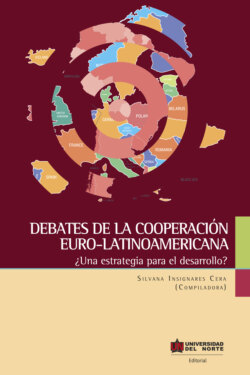Читать книгу Debates de la cooperación latinoamericana - Silvana Insignares Cera - Страница 14
На сайте Литреса книга снята с продажи.
CONTEXT II: MIGRATION AND REFUGEES IN THE EUROPEAN UNION AND GERMANY
ОглавлениеMigration has always been a global phenomenon. Still, the UNHCR has highlighted that the number of migrants has never been so high than in 2016: It is estimated that more than 60 Million people can be considered as “on the move” (ISSC 2016), thus being migrants. The gross of these migrants are internal migrants. Internal migration means that people move within the boundaries of their country. Countries with the highest share of internal migrants are Colombia, Syria, and Sudan where due to internal conflicts and wars people are forced to leave their home and settle in other places within the countries’ territory (Sánchez 2012). Current international migration flows can be seen for example from Central America to the US, in South East Asia, but also from the Eastern Side of the Mediterranean (especially Syria, Iraq, and Afghanistan) to Europe (Sassen 2016). Nevertheless, it has to be acknowledged that most of the migration flows from Syria, Iraq or Afghanistan take place to neighboring countries (for example to Jordan or Turkey) and only a smaller share of these migration flows actually affects the European Union. While there is considerable agreement on the complexity of causes which actually drive refugee migration to the European Union, the effects of these recent migration flows on the European Union require further analyses. Despite the only relatively small share of migration flows coming to the European Union, migration has become an important issue on European agendas and is perceived also as a challenge for the European integration project.
Different political opinions on how to handle the increasing amount of refugees coming to the European Union exist and range from building strict physical and legal barriers to a more progressive management of refugees. The main focus from a science perspective on refugees in Germany has been on the interplay between national and supra-national levels, i.e. the member states and the institutions of the European Union. Researchers have analyzed how recent migration flows change the face of European integration and what impact the current situation may have on the European Union. In order to amplify this multi-level-governance perspective, it is argued that the local level plays an important role. Therefore this article focuses on the impact of the refugees on the local level. The city of Leipzig, Germany is used as a case study.
In Germany, the number of refugees (defined as asylum seekers) in 2015 has been 1.091.894 and between January and September 2016 this number was 272,185. The reasons for this decrease lie in new international agreements (for example the EU-Turkey agreement). German law on how to distribute asylum seekers foresees different steps: Asylum seekers coming to Germany first go to a so called “Erstaufnahme-Einrichtung”. In this institution, the refugees will hand in there asylum seeker application. The idea is that in this “Erstaufnahme-Einrichtung” asylum seekers reside only for a very limited amount of time. After they handed in their asylum seekers application and their application is analyzed, refugees have the possibility to move to large scale asylum seekers accommodation, rent an own flat or live in other forms of residences. The municipality is responsible to organize refugees’ residences and receives subsidies for every asylum seeker coming to the municipality‘s territory. The distribution of the asylum seekers is done by the so called Königssteiner Schlüssel, a distribution mechanism which distributes refugees to the different federal states in Germany. Federal states with higher population numbers and higher economic development receive more refugees than smaller, less economically successful federal states. The federal states also have mechanisms on how to distribute refugees within their territory. For example, the federal state of Saxony distributes refugees proportionally to the municipalities’ inhabitants; therefore larger municipalities receive more refugees than smaller municipalities.
There are no legal specifications on how municipalities should organize the refugees’ accommodation as long as basic requirements f.e. concerning hygienic standards are fulfilled. Within this article, it is argued that the question of how municipalities deal with refugees can be used as a test whether and how the concept of the European city is still considered as a leitmotiv for urban development or not. This question is exemplarily analyzed in the case of Leipzig, Germany.
